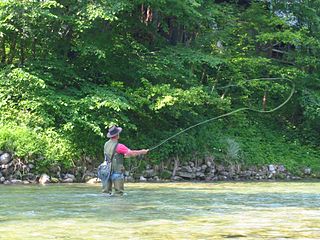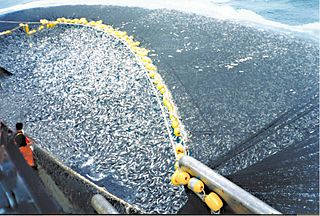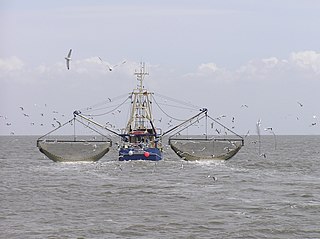
Fishing is the activity of trying to catch fish. Fish are normally caught in the wild. Techniques for catching fish include hand gathering, spearing, netting, angling and trapping. “Fishing” may include catching aquatic animals other than fish, such as molluscs, cephalopods, crustaceans, and echinoderms. The term is not normally applied to catching farmed fish, or to aquatic mammals, such as whales where the term whaling is more appropriate. In addition to being caught to be eaten, fish are caught as recreational pastimes. Fishing tournaments are held, and caught fish are sometimes kept as preserved or living trophies. When bioblitzes occur, fish are typically caught, identified, and then released.

A fishing line is a cord used or made for angling. Fishing line is strong like, but not string. Important parameters of a fishing line are its length, material, and weight. Factors that may determine what line an angler chooses for a given fishing environment include breaking strength, knot strength, UV resistance, castability, limpness, stretch, abrasion resistance, and visibility. Most modern lines are made from nylon or silk.

Fly fishing is an angling method in which an artificial "fly" is used to catch fish. The fly is cast using a fly rod, reel, and specialized weighted line. Casting a nearly weightless fly or "lure" requires casting techniques significantly different from other forms of casting. Fly fishermen use hand tied flies that resemble natural invertebrates, baitfish, other food organisms, or "lures" to provoke the fish to strike.

Angling is a method of fishing by means of an "angle". The hook is usually attached to a fishing line and the line is often attached to a fishing rod. Modern fishing rods are usually fitted with a fishing reel that functions as a mechanism for storing, retrieving and paying out the line. Tenkara fishing and cane pole fishing are two techniques that do not use a reel. The hook itself can be dressed with bait, but sometimes a lure, with hooks attached to it, is used in place of a hook and bait. A bite indicator such as a float, and a weight or sinker are sometimes used.

A fisherman or fisher is someone who captures fish and other animals from a body of water, or gathers shellfish.

The fishing cat is a medium-sized wild cat of South and Southeast Asia. Since 2016, it is listed as Vulnerable on the IUCN Red List. Fishing cat populations are threatened by destruction of wetlands and have declined severely over the last decade. The fishing cat lives foremost in the vicinity of wetlands, along rivers, streams, oxbow lakes, in swamps, and mangroves.

Overfishing is the removal of a species of fish from a body of water at a rate that the species cannot replenish in time, resulting in those species either becoming depleted or very underpopulated in that given area. Overfishing has spread all over the globe and has been present for centuries.

The fishing industry includes any industry or activity concerned with taking, culturing, processing, preserving, storing, transporting, marketing or selling fish or fish products. It is defined by the Food and Agriculture Organization as including recreational, subsistence and commercial fishing, and the harvesting, processing, and marketing sectors. The commercial activity is aimed at the delivery of fish and other seafood products for human consumption or as input factors in other industrial processes. Directly or indirectly, the livelihood of over 500 million people in developing countries depends on fisheries and aquaculture.

Recreational fishing, also called sport fishing, is fishing for pleasure or competition. It can be contrasted with commercial fishing, which is fishing for profit, or subsistence fishing, which is fishing for survival.

A fishing lure is a type of artificial fishing bait which is designed to attract a fish's attention. The lure uses movement, vibration, flash and color to bait fish. Many lures are equipped with one or more hooks that are used to catch fish when they strike the lure. Some lures are placed to attract fish so a spear can be impaled into the fish or so the fish can be captured by hand. Most lures are attached to the end of a fishing line and have various styles of hooks attached to the body and are designed to elicit a strike resulting in a hookset. Many lures are commercially made but some are hand made such as fishing flies. Hand tying fly lures to match the hatch is considered a challenge by many amateur entomologists.

A fishing trawler is a commercial fishing vessel designed to operate fishing trawls. Trawling is a method of fishing that involves actively dragging or pulling a trawl through the water behind one or more trawlers. Trawls are fishing nets that are pulled along the bottom of the sea or in midwater at a specified depth. A trawler may also operate two or more trawl nets simultaneously.

Commercial fishing is the activity of catching fish and other seafood for commercial profit, mostly from wild fisheries. It provides a large quantity of food to many countries around the earth, but those who practice it as an industry must often pursue fish far into the ocean under adverse conditions. Large-scale commercial fishing is also known as industrial fishing. This profession has gained in popularity with the development of shows such as Deadliest Catch, Swords, and Wicked Tuna. The major fishing industries are not only owned by major corporations but by small families as well. The industry has had to adapt through the years in order to keep earning a profit. A study taken on some small family-owned commercial fishing companies showed that they adapted to continue to earn a living but not necessarily make a large profit. It is the adaptability of the fishermen and their methods that cause some concern for fishery managers and researchers; they say that for those reasons, the sustainability of the marine ecosystems could be in danger of being ruined.

A fishing net is a net used for fishing. Nets are devices made from fibers woven in a grid-like structure. Some fishing nets are also called fish traps, for example fyke nets. Fishing nets are usually meshes formed by knotting a relatively thin thread. Early nets were woven from grasses, flaxes and other fibrous plant material. Later cotton was used. Modern nets are usually made of artificial polyamides like nylon, although nets of organic polyamides such as wool or silk thread were common until recently and are still used.

Seine ( SAYN) fishing is a method of fishing that employs a fishing net called a seine, that hangs vertically in the water with its bottom edge held down by weights and its top edge buoyed by floats. Seine nets can be deployed from the shore as a beach seine, or from a boat.

Artisanal fishing are various small-scale, low-technology, low-capital, fishing practices undertaken by individual fishing households. Many of these households are of coastal or island ethnic groups. These households make short fishing trips close to the shore. Their produce is usually not processed and is mainly for local consumption. Artisan fishing uses traditional fishing techniques such as rod and tackle, fishing arrows and harpoons, cast nets, and small traditional fishing boats.

Fishing tackle is the equipment used by anglers when fishing. Almost any equipment or gear used for fishing can be called fishing tackle. Some examples are hooks, lines, sinkers, floats, rods, reels, baits, lures, spears, nets, gaffs, traps, waders and tackle boxes.

A fishing vessel is a boat or ship used to catch fish in the sea, or on a lake or river. Many different kinds of vessels are used in commercial, artisanal and recreational fishing.

A fishing village is a village, usually located near a fishing ground, with an economy based on catching fish and harvesting seafood. The continents and islands around the world have coastlines totalling around 356,000 kilometres (221,000 mi). From Neolithic times, these coastlines, as well as the shorelines of inland lakes and the banks of rivers, have been punctuated with fishing villages. Most surviving fishing villages are traditional.

Fishing techniques are methods for catching fish. The term may also be applied to methods for catching other aquatic animals such as molluscs and edible marine invertebrates.
The following outline is provided as an overview of and topical guide to fishing:




















